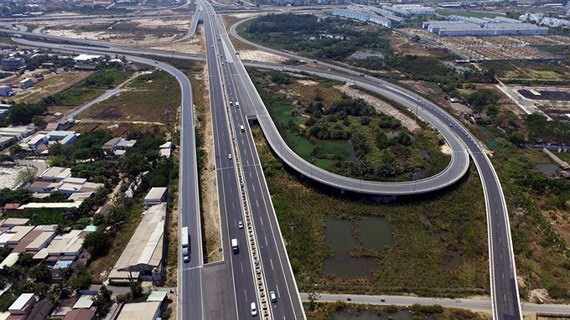 Society
Society

A transport official from the Directorate for Roads of Việt Nam (DRV) said that the State-owned Việt Nam Expressway Corporation (VEC) does not have the authority to ban vehicles from driving on the expressways under its management.
 |
| The HCM City-Long Thành-Dầu Giây expressway. — VNA/VNS Photo Mạnh Linh |
HÀ NỘI — A transport official from the Directorate for Roads of Việt Nam (DRV) said that the State-owned Việt Nam Expressway Corporation (VEC) does not have the authority to ban vehicles from driving on the expressways under its management.
Vũ Ngọc Lăng, head of the traffic safety department under the directorate, told Vietnam News Agency that late on Monday, the DRV asked VEC to submit an official report regarding its controversial announcement to permanently “deny service” to two cars (number plates 51A-55850 and 51G-77256) on “all expressways under VEC’s management” for the drivers’ alleged disruptive activities at the toll booths along the HCM City-Long Thành-Dầu Giây Expressway on Sunday.
Local media and the public have lambasted the decision of VEC, the largest operator and developer of expressways in Việt Nam, with many lawyers calling it illegal given that VEC is merely a company and not an authorised agency that can deny the use of public roads to any driver or vehicle.
“After receiving the official report from VEC, based on the Civil Code, the law on handling administrative violations and other transport legislation, the directorate will study whether it is within VEC’s power to issue such a ban,” Lăng told Vietnam News Agency.
However, Lăng said VEC has overstepped its authority and that penalties can only be levied on drivers and owners of vehicles, not on the vehicles.
Nguyễn Viết Tân, Director of the Việt Nam Expressway Services Engineering JSC (VECE), the member company of VEC that directly issued the ban on behalf of its parent corporation, said the driver of the 51A car stopped at the toll station but refused to pay the toll. Other passengers in the car – including an elderly person, a child and a woman – exited the vehicle to “cause disorder” at the station in an attempt to draw attention from other drivers, resulting in gridlock.
The driver of the 51G car also used similar tactics, Tân said.
To resolve the issues and avoid further congestion on the busy road, staff of the toll station invited the drivers into their office to talk.
However, Tân said the drivers and passengers of the two cars “failed to follow directions of the traffic controller personnel, committed acts of property damage and threatened violence on the personnel,” resulting in trauma for the staff and congestion and undermining security and order.
Tân justified the company’s ban by referring to a decision issued in January which would allow the company to deny service only for a certain duration (from a few days to one or two years) to any vehicles that violate traffic regulations such as stopping, driving in the wrong lane or overloading the expressway.
Also according to the decision, once the service denial period is over, drivers of the vehicles must sign a document pledging no further violations before they are allowed back on the roads.
Tiền Phong (Vanguard) newspaper also quoted an unnamed “leader of VEC” saying that the corporation denied service to at least 1,000 offending cars and trucks every year, adding that expressways under its management are not the “sole paths” and drivers could still use other parallel roads.
Another official from the Directorate for Roads, Lê Hồng Điệp, chief of the road maintenance and management department, said "there is no legal provision for permanent denial of service to vehicles on expressways".
The final conclusion of the issue is expected to be delivered by late tomorrow, the directorate said.
VEC currently manages four expressways in the country: the Cầu Giẽ-Ninh Bình and Nội Bài-Lào Cai expressways in the north, the Đà Nẵng-Quảng Ngãi one in the central region and the HCM City-Long Thành-Dầu Giây route in the south. — VNS



.jpg)
